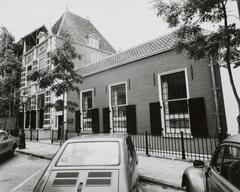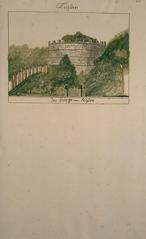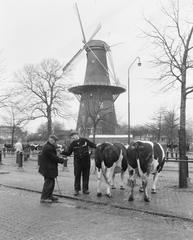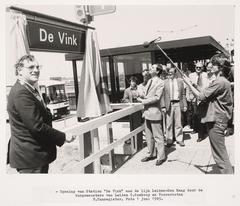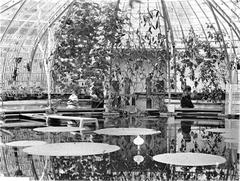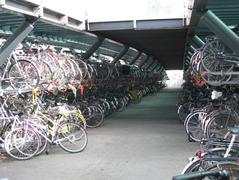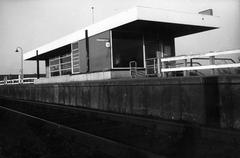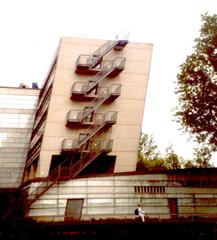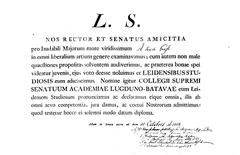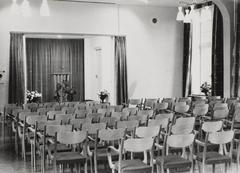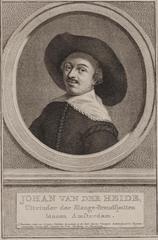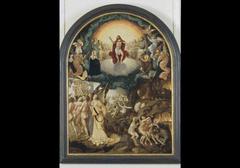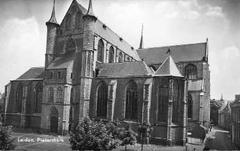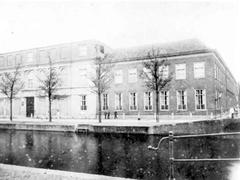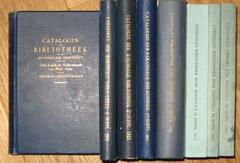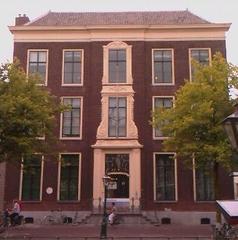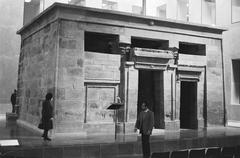
Hooglandse Kerk Visiting Hours, Tickets, and Guide to Leiden’s Historical Gem
Date: 04/07/2025
Introduction
Located in the heart of Leiden, the Hooglandse Kerk is one of the Netherlands’ most impressive examples of Dutch Gothic architecture and a symbol of the city’s vibrant cultural and spiritual history. Originally consecrated in 1315 as a wooden chapel dedicated to Saint Pancratius, it evolved over centuries into a soaring cruciform basilica. Today, the church is a living monument—hosting concerts, academic gatherings, community events, and offering visitors an opportunity to explore both its architectural beauty and Leiden’s rich heritage (Hooglandse Kerk Official; Wikipedia; itravelforthestars.com).
This guide provides detailed information on the Hooglandse Kerk’s history, architectural highlights, visiting hours, tickets, accessibility, and tips for making the most of your visit. Whether you are a history enthusiast, architecture lover, or simply exploring Leiden, the Hooglandse Kerk is a must-see destination.
Table of Contents
- The Story of Hooglandse Kerk: History and Significance
- Architectural Highlights
- Visiting Information
- Guided Tours and Events
- Nearby Leiden Attractions
- Frequently Asked Questions (FAQ)
- Plan Your Visit
- References and Further Reading
The Story of Hooglandse Kerk: History and Significance
Origins and Early Development (14th Century)
The Hooglandse Kerk began as a wooden chapel in 1315, built on the “Hooge Land” just outside Leiden’s core. Its rapid replacement by a stone structure reflected Leiden’s urban growth and spiritual ambitions. By the late 14th century, the church had grown in both size and importance, with features such as the nave’s roof and the tower—elements that remain today (Wikipedia; Hooglandse Kerk Official).
Chapter Church and Gothic Expansion
In 1366, the church was elevated to chapter church status, catalyzing a series of ambitious Gothic expansions. The construction of the cruciform basilica, with its monumental choir and the world’s widest Gothic transept (65.7 meters), was completed mainly between the 14th and 16th centuries (Hooglandse Kerk Official). At its zenith, the church boasted 24 altars and was considered for cathedral status.
Reformation, Iconoclasm, and Adaptation
The Protestant Reformation brought dramatic changes. In 1566, iconoclastic riots led to the destruction of religious images and altars. By 1572, the church became Protestant, its interior whitewashed and stripped of Catholic iconography. During the 1574 Siege of Leiden, the church even served as a grain store, underlining its role in the city’s survival (Wikipedia).
Golden Age to Modern Era
Through the Dutch Golden Age, the Hooglandse Kerk remained a central venue for religious, civic, and academic events. The west portal and windbreak vestibules were added in the 17th century. The 19th century brought decline and damage, notably from the 1807 gunpowder explosion, but successive restorations have preserved its grandeur and significance (Hooglandse Kerk Official; Wikipedia).
Architectural Highlights
Exterior Features
The Hooglandse Kerk is a textbook example of Dutch Gothic architecture, featuring:
- Cruciform Layout: A traditional cross-shaped plan with an expansive nave, wide transept, and elevated choir.
- Brick Construction: Locally fired brick with limestone accents, lending warmth and durability.
- Soaring Windows and Buttresses: Tall lancet windows and flying buttresses create a luminous, airy impression (itravelforthestars.com).
- No Central Spire: Unlike many Gothic churches, it features a modest western bell tower rather than a massive spire.
Interior Features
Inside, visitors find:
- Vaulted Nave: A soaring nave (approx. 28 meters high) with ribbed vaults and slender columns.
- Stained Glass: Surviving 16th- and 17th-century windows depict biblical scenes, saints, and donor coats of arms.
- Choir and Ambulatory: The high altar is flanked by carved choir stalls and radiating chapels with memorials and tombs.
- Historic Pipe Organ: A Renaissance organ, restored and still in use for services and concerts.
- Artistic Treasures: Notable tombs (e.g., Justinus van Nassau), a 17th-century pulpit, and memorials.
Decorative Elements
- Stone and Wood Carvings: Heraldic, floral, and religious motifs throughout.
- Memorials and Tombs: Commemorate notable citizens, clergy, and benefactors.
Visiting Information
Opening Hours
- Regular Hours: Monday to Saturday, 10:00 AM – 5:00 PM; Sunday, 12:00 PM – 5:00 PM.
- Note: Hours may vary for holidays, special events, or private ceremonies. Always check the official Hooglandse Kerk website before your visit.
Tickets and Admission
- General Admission: Free of charge; donations are welcome to support preservation.
- Special Events/Concerts: Some events require tickets. Purchase via the official website or at the venue.
Accessibility
- Wheelchair Access: Main entrances are equipped with ramps; accessible restrooms are available.
- Assistance: Staff can offer help; contact ahead for specific needs.
Directions
- By Train: 10–15 minute walk from Leiden Central Station.
- By Car: Parking at Q-Park stations or the Haagweg parking lot (with a shuttle service on event days).
- By Bike: Ample bicycle parking nearby.
Photography and Visitor Etiquette
- Photography: Permitted for personal use; avoid flash and tripods unless authorized.
- Etiquette: Dress modestly. Maintain silence in prayer areas and during services.
Guided Tours and Events
- Guided Tours: Book via the official website for in-depth historical and architectural insights.
- Self-Guided Tours: Download the GPSmyCity app for interactive, offline tours.
- Special Events: The church hosts organ concerts, art exhibitions, academic gatherings, and major civic ceremonies such as Lintjesregen and commemorations (NGV-afdelingen; Centraal Plus; AllEvents; DutchReview).
Nearby Leiden Attractions
Enhance your visit by exploring:
- Pieterskerk: Another Gothic church with historic ties to the Pilgrims.
- Leiden Botanical Gardens: The oldest in the Netherlands.
- Leiden’s Canals and Museums: National Museum of Antiquities, Museum De Lakenhal, and more.
- Saturday Market & Cafés: Just outside the church, perfect for local flavor.
Frequently Asked Questions (FAQ)
Q: What are the Hooglandse Kerk’s visiting hours?
A: Monday–Saturday 10:00–17:00, Sunday 12:00–17:00. Check the official site for updates.
Q: Is there an entrance fee?
A: No, general admission is free. Donations are appreciated.
Q: Are guided tours available?
A: Yes, by prior booking. Self-guided options are also available.
Q: Is the church accessible for people with disabilities?
A: Yes, with ramps, accessible restrooms, and staff assistance as needed.
Q: Can I take photos inside?
A: Yes, for personal use. No flash or tripods without permission.
Q: What events are hosted at the church?
A: Regular religious services, concerts, art exhibitions, academic and civic ceremonies, and community gatherings.
Plan Your Visit
-
Check the agenda for special events before visiting.
-
For group tours or special access, contact:
- Email: [email protected]
- Phone: +31 (0)71 514 96 36
- Address: Hooglandse Kerkgracht 58, 2312 HV Leiden, Netherlands
-
Enhance your experience: Download the Audiala app for audio tours and event updates. Follow the church and Leiden’s cultural institutions on social media for news and inspiration.
References and Further Reading
- Hooglandse Kerk Official Website
- Wikipedia – Hooglandse Kerk
- itravelforthestars.com – Leiden Travel Guide
- NGV-afdelingen – 2025 Events at Hooglandse Kerk
- Centraal Plus – Lintjesregen 2025 in Leiden
- AllEvents Leiden – Leids Bier & Wijnfestival 2025
- DutchReview – Things to Do in Leiden
- Hooglandse Kerk Official Website







